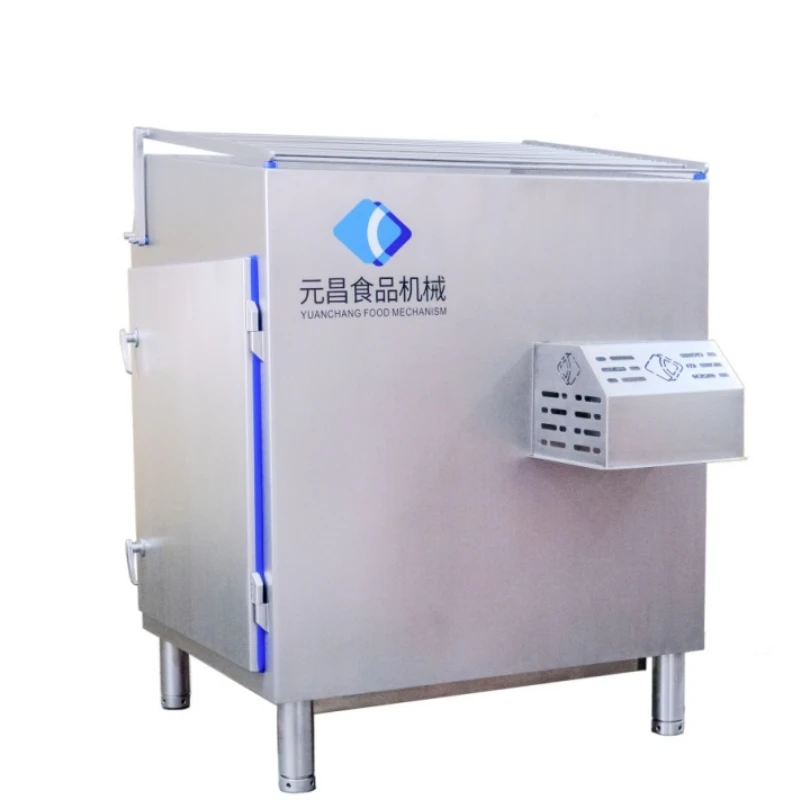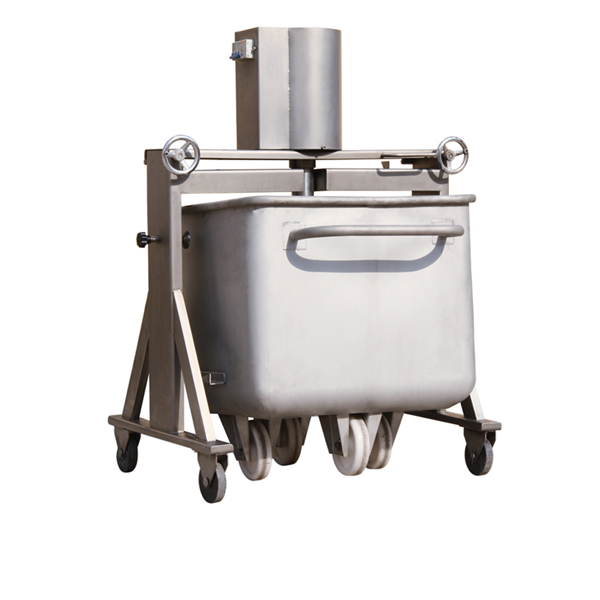HACCP audit
There are six types of certification audits, first-stage audits, second-stage audits, surveillance audits, certificate renewal audits and re-evaluation. The common problems are as follows.
The audit plan does not cover the full range of HACCP requirements
The purpose of the first stage audit is to review the prerequisites of the auditee’s HACCP-based food safety system, including GMP, SSOP plan, employee training plan, equipment maintenance plan and HACCP plan, etc. Some auditors have left out parts of the HACCP requirements in the audit plan for the first stage audit.
The department names in the audit plan do not match the department names in the auditee’s org chart
For example, the department names in the audit plan are the quality department and the production department, while the department names in the organization chart of the auditee are the technical quality department and the production planning department; some of the departments involved omit the packaging material warehouse, auxiliary materials Warehouses and finished product warehouses; after some audit materials were reported, the auditors did not find that the audit plan was incomplete.
Ignoring the details of document review
For example, some organizations have established a HACCP system, but the number of the rat traps is not indicated on the water pipe network diagram provided, and the flow diagram and logistics diagram of the production workshop are not provided, and there is a lack of rat and fly control information, such as rat and fly control. Procedures (plans), plant site rodent control network diagram, etc. Some auditors are often blind to these details.
Records of unfilled observations
Some auditors have the requirement of ”whether the HACCP team members conduct on-site verification in order to ensure the correctness and completeness of the flow diagram” in the column ”Product Description and Process Flow Diagram” for verification, but they do not fill in the observation results in the “Observation Results” column. In the “HACCP Plan” column of the checklist, there is a requirement that “HACCP documented procedures must be approved”, but in the “Observation” column, there is no record that the document has been approved.
Missing processing steps
For example, the process flow diagram of the HACCP plan for canned oranges in sugar water provided by the auditee includes the “cleaning and blanching” process, but the “Hazard Analysis Worksheet” omits this process, and the hazard of “cleaning and blanching” is not carried out analyze. Some auditors did not find in the documentation and on-site audit that the “cleaning and blanching” process was omitted by the auditee.
The description of the non-conforming item is not precise
For example, the locker room in the factory area is not standardized, the workshop is cluttered, and the original records are incomplete. In this regard, the auditor should describe the specific fencing that is not standardized in the locker room in the factory area, where the workshop is messy, and the types and items with incomplete original records, so that the organization can take targeted rectification measures.
Follow-up verification is not serious
In the first-stage non-conformity report issued by some auditors, in the column of “Correction and Corrective Actions to be Taken”, although the organization has filled in “modify the product description of Tangshui orange and Tangshui loquat, increase PH and AW values, etc. content, but did not provide any witness materials, and the auditor even signed and confirmed in the “Follow-up Verification” column.
Incomplete evaluation of HACCP plan
Some auditors did not evaluate the determination of CCP and the rationality of the formulation of HACCP plan in the first stage audit report issued. For example, in the first-stage audit report, it was written, “After the audit team audited, except for the imperfect parts.” Some auditors wrote in the “Audit Summary and HACCP System Effectiveness Evaluation Opinions” column of the HACCP audit report. , “Failure to take appropriate corrective action when individual CCP monitoring deviates.”
Some countermeasures
2.1 The auditor should first review whether the GMP, SSOP, requirements and HACCP documents documented by the auditee meet the requirements of the standard, such as HACCP plan, documentation, process verification, critical limits of each CCP point, and whether hazards can be controlled. Focus on reviewing whether the HACCP plan properly monitors the critical control points, whether the monitoring and verification measures are consistent with the system documents, and comprehensively review the management of the HACCP documents by the auditee.
2.1.1 Generally, the following documents must be reviewed:
2.1.2 Process flow diagram with indicated CCP and related parameters
2.1.3 HACCP worksheet, which should include identified hazards, control measures, critical control points, critical limits, monitoring procedures and corrective actions;
2.1.4 Validation worklist
2.1.5 Records of results of monitoring and verification in accordance with the HACCP plan
2.1.6 Supporting Documents for the HACCP Plan
2.2 The audit plan prepared by the audit team leader must cover all the requirements of the audit criteria and all areas within the scope of the HACCP system, the audit department must cover the relevant provisions of the HACCP requirements, and the audit schedule must meet the time limit requirements specified by the certification body. Before the on-site audit, it is necessary to introduce the auditee’s profile and relevant professional knowledge of food hygiene to the audit team.
2.3 The preparation of the audit checklist needs to cover the requirements of the audit plan. When compiling the checklist, it should be based on the relevant HACCP system and its application criteria and the organization’s HACCP system documents, and pay attention to the way of review. Auditors should have a full understanding of the organization’s HACCP system documents, compile a checklist based on the actual situation of the organization, and need to consider sampling principles. Based on the checklist in hand, the auditor can grasp the audit time and key points in the audit process, and can quickly or change the content of the checklist when encountering new situations. If the auditor finds that the content of the audit plan and the checklist is not accurate, such as omission of audit criteria, unreasonable audit time arrangement, unclear audit ideas, unspecified number of samples for sampling, etc., the checklist should be revised in time.
2.4 At the audit site, the auditor should conduct an independent hazard analysis on the product based on the verified process flow and process description, and compare it with the hazard analysis worksheet established by the HACCP team of the auditee, and the two should be basically consistent. The auditor should judge whether the potential hazards have been identified and well controlled by the auditee, and whether the significant hazards have been controlled by CCP. The auditee shall ensure that the CCP monitoring plan formulated in accordance with the HACCP plan is basically effective, the critical limits are scientific and reasonable, and the correction procedures can cope with various possible situations.
2.5 Auditors take a representative sample for audit records and on-site verification. The auditor should judge whether the product processing process of the auditee can be carried out in accordance with the process flow and process requirements stipulated in the HACCP plan, whether the monitoring at the CCP point is basically and effectively implemented, and whether the CCP monitoring personnel have received corresponding qualification training and are competent for their positions. Work. The auditee shall be able to record the monitoring results of the CCP in a timely manner and review it every other day. The records shall be basically accurate, true and reliable, and can be traced back; corresponding corrective measures can be taken for the deviations found in the monitoring of the CCP; Periodic confirmation and evaluation are required. The on-site audit should confirm that the GMP, SSOP and prerequisite plans are basically complied with by the auditee and keep corresponding records; the auditee can timely rectify the problems found and customer requirements. Comprehensively evaluate whether the implementation and operation of the HACCP system established by the auditee meets the specified requirements.
2.6 The auditor should follow up and verify the auditee’s closure of the non-conformity report in the first stage, and need to verify the accuracy of its analysis of the reasons for the non-conformity, the degree of corrective actions and the degree to which the witness materials meet the requirements, and the accuracy of the verification conclusion of the follow-up situation, etc. .
2.7 The HACCP audit report issued by the audit team leader must meet the specified requirements, the audit report should be accurate and complete, the language used should be accurate, the effectiveness of the auditee’s HACCP system should be evaluated, and the audit conclusion should be objective and fair.











